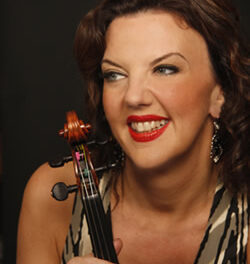The Duke Symphony Orchestra under the direction of Harry Davidson presented an all French program at Baldwin Auditorium on Duke’s East Campus on this cold December evening. From the dramatic music of Berlioz and Saint-Saëns to the gentle impressionism of Fauré and Debussy it was a welcomed escape from the deluge of carols and manger songs of this time of the year.
The program opened with Saint-Saëns’ Dance Macabre, Op 40 that we usually hear to distraction around the end of October. The performance seemed a little stiff to me, all the right notes, but little of the graveyard & dancing bones the composer intended. The fiddling of “Death” played by concertmaster Richard Zhu was exceptional and there were moments of eerie effect and driving fury here and there.
Faure’s Pavane, Op 50, though not directly out of the impressionism school led by Ravel and Debussy, anticipates procedures they adopted. It is Faure’s unique idiom, strongly influenced by renaissance music, unresolved mild discords and special coloristic effects. The Pavane was played lyrically and maximized the generous compliment of strings employed in the student symphony orchestra (46 violins, 12 violas, 15 cellos and 4 basses).
The orchestra was joined by Laura Byrne, harp teacher at Duke and at UNC, for a performance of Danses Sacrée et Profane for Harp and Strings. Debussy wrote this piece in 1904 on commission of the Parisian instrument manufacturer Pleyel, who had invented a chromatic harp. Unlike the conventional concert harp, which is tuned according to the notes of the diatonic major scale and has seven foot pedals, each of which corresponds to a single scale degree and its chromatic alterations (i.e. natural, sharp, and flat), Pleyel’s instrument had no pedals. Instead, a separate string was provided for each chromatic note throughout its range. The instrument itself was soon abandoned because of its cumbersome size and excessive time consuming tuning requirements. However, Debussy’s composition remains a favorite of harpists and audiences alike and is performed using the conventional concert harp. It remains a vibrant and exotic work with coruscating passagework and rich chordal effects. Byrne demonstrated her command of the harp, and the orchestra brought its opulent string sound to this performance.
After an intermission, the Duke Symphony Orchestra tackled one of the most popular and remarkable works in the 19th century romantic repertoire: Hector Berlioz’s Symphonie Fantastique, Op. 14. Not quite three decades earlier, Beethoven opened the door to the romantic era in music with his “Eroica” Symphony. Berlioz bounded out that door with a vengeance. He often bragged of his “excesses,” his use of instruments never used before in a symphony orchestra, and his use of augmented brass and percussion sections and other techniques. Thus he is often regarded as a bombastic composer. However, I am often impressed, when I hear large works like this and the Requiem, Op. 9, by the passages of tenderness and ethereal beauty.
The orchestra was well prepared for this performance and did a remarkable presentation of it. The phrasing, dynamics and tempo changes were accomplished with skill and effectiveness that spoke of a truly musical and inner understanding of the work. In spite of a few weaknesses not worth mentioning I must say I was very impressed and moved by this rendition.
For many, the sounds produced by a classical-romantic era symphony orchestra are pure magic, something beyond this world yet touching some of the deepest feelings within all of us. The students in the Duke Symphony Orchestra, for the most part, play purely for the love of that sound. Even though very few will move on to conservatories or further major study, these young people will take with them a treasure of memories and pleasures. Some may make further contributions in community symphony orchestras where they settle. Some may use their musical knowledge and experience in other ways to enrich their lives and the lives of others. None will forget Maestro Harry Davidson and the magic they made together on this occasion.











